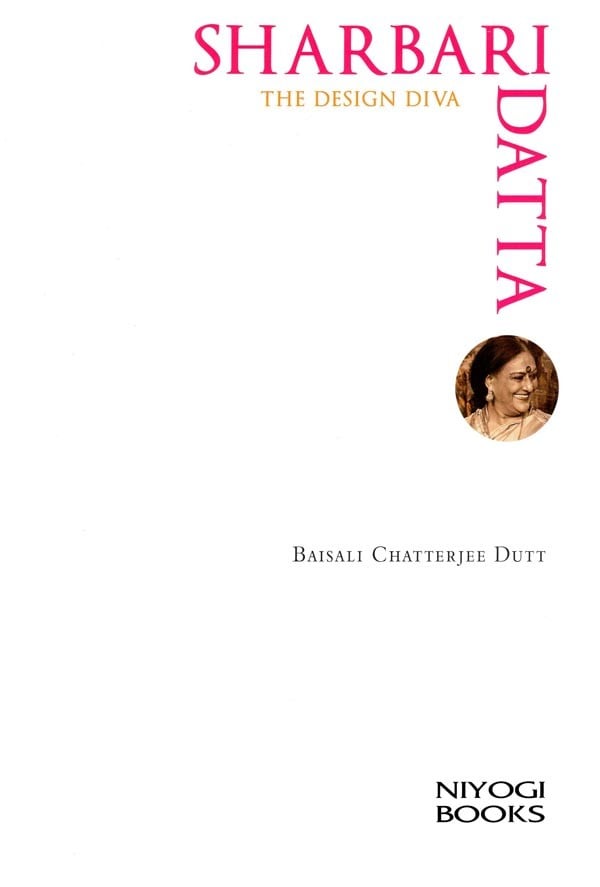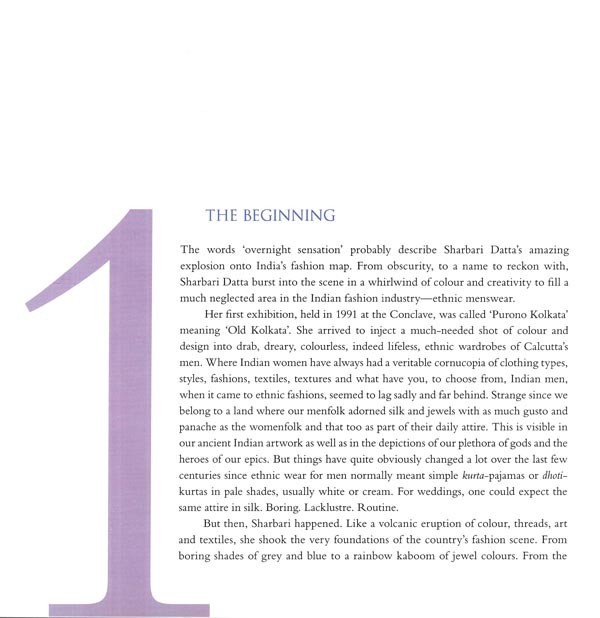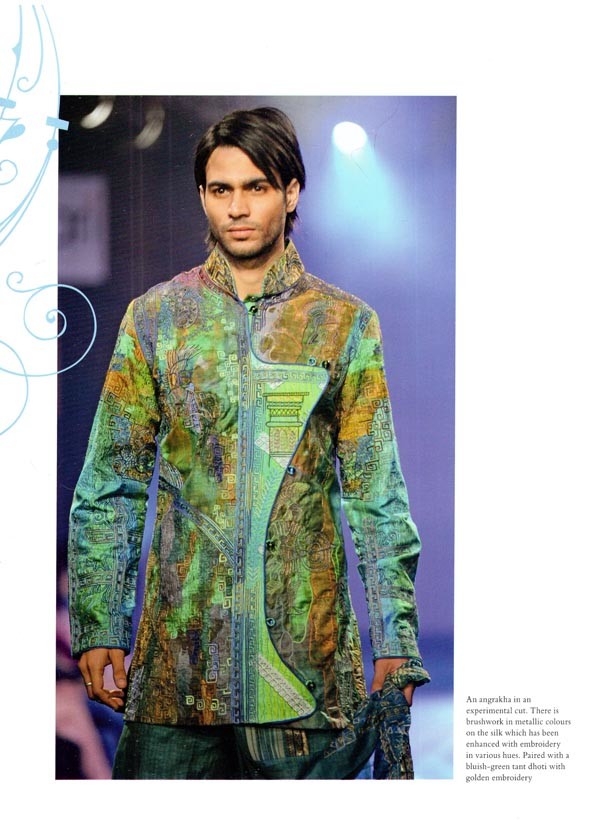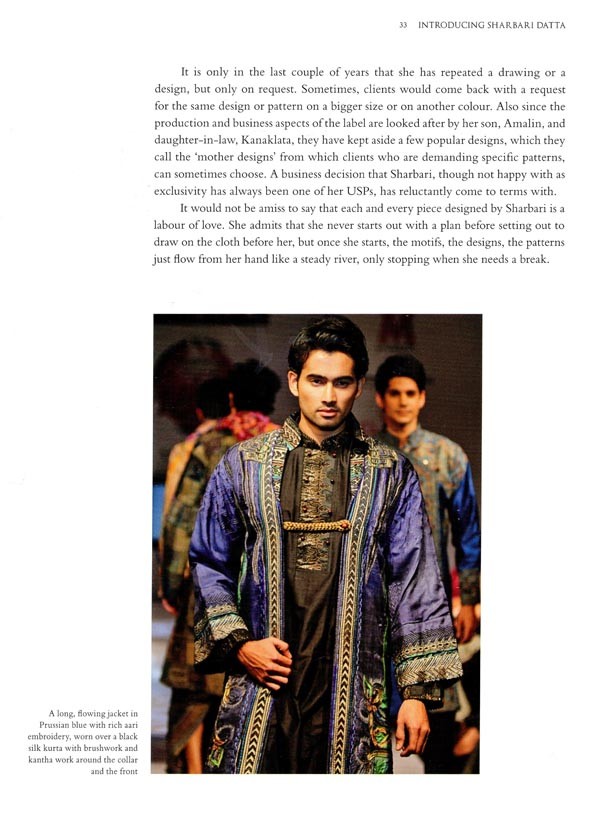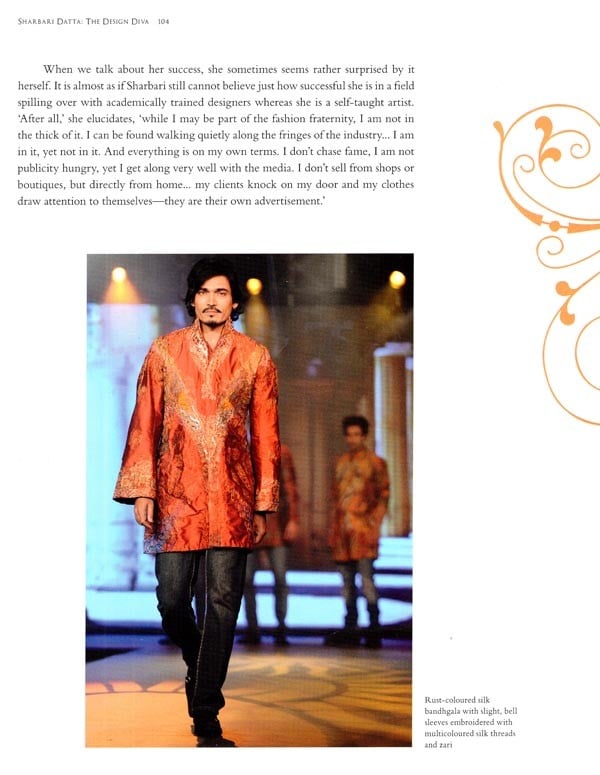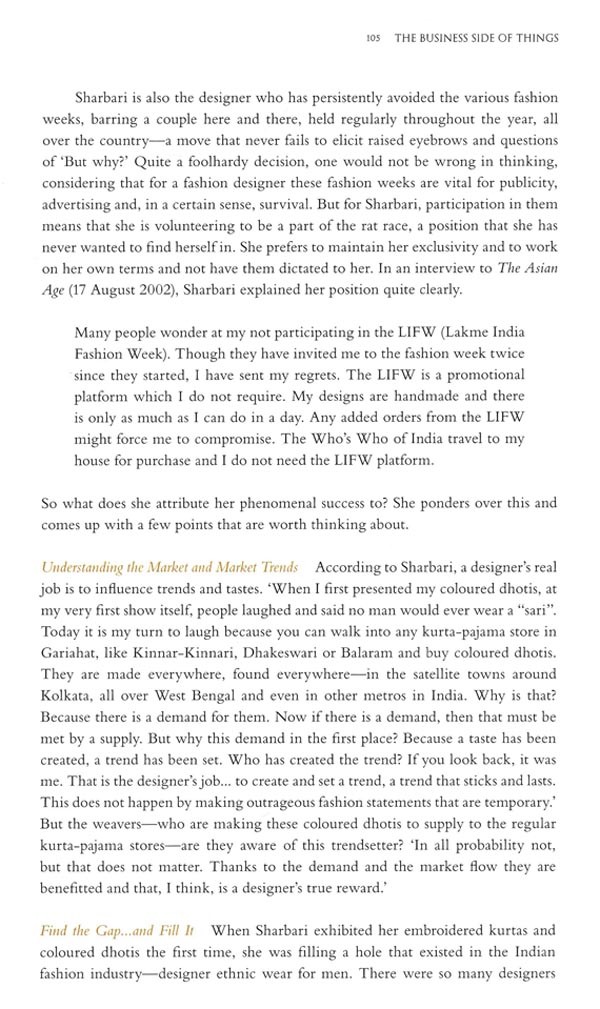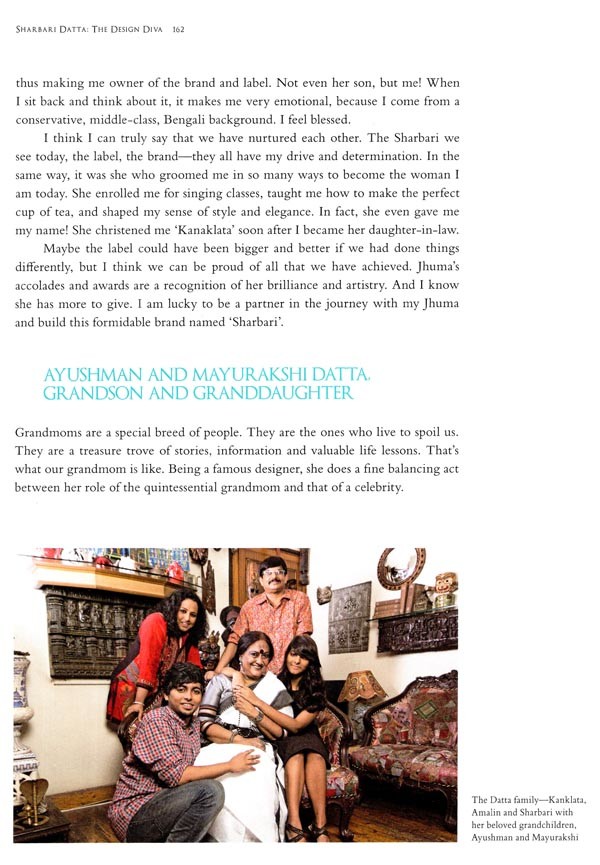
Sharbari Datta- The Design Diva
Book Specification
| Item Code: | AZE845 |
| Author: | Baisali Chatterjee Dutt |
| Publisher: | NIYOGI BOOKS |
| Language: | ENGLISH |
| Edition: | 2015 |
| ISBN: | 9789383098880 |
| Pages: | 188 (Throughout B/w and Color Illustrations) |
| Cover: | HARDCOVER |
| Other Details | 11.00x9.00 inch |
| Weight | 990 gm |
Book Description
Enter Sharbari Datta. The visionary. The revivalist. The game changer. She noticed the gaping hole in the ethnic wear choices for men and decided to step in and fill the gap. With her own unique touches and amazing color palettes, she catapulted the various elements of men's ethnic wear to the forefront.
She also gave 'kantha', the traditional handicraft of rural Bengal, a glamorous facelift. She incorporated the techniques of this simple craft and elevated it to a veritable art form.
This book, replete with interviews and testimonials by Sharbari's celebrity clientele, and amply illustrated with a treasure trove of photographs, tries to capture the essence of Sharbari's designscape.
Baisali's other great passion is theatre. She has performed with some of the country's top English theatre groups like Raell Padamsee's 'ACE' productions in Mumbai, and Kolkata's Red Curtain. Currently she is drama facilitator at The Creative Arts Studio, and at South Point High School.
Baisali was born in New York, schooled in Bangalore and went to college in Delhi. She has an MA in French from Jawaharlal Nehru University and she now lives in Kolkata with her family.
I was then a trainee with a Calcutta daily and the young man was my colleague and awfully snooty, the sari designer's younger brother. I wasn't much of a shopper. but I was intrigued. I'd already heard about Alo Datta, a sari designer when designer saris were as unknown as women's sections in newspapers and fashion updates. I'd also heard about the Datta family which had a reputation for being outrageously unconventional in staid old Calcutta.
And no wonder. Holding a sari show in its temple of art, the Academy of Fine Arts, was indeed unconventional. Ditto for using vegetables as props in the display of saris. Not to mention the printed designs themselves: pottery shards strewn inelegant disarray; wiry stick figures in agile formations; intricate lines running into Dora Maar eyes.... I was suitable impressed. Because most prints those days had paisleys and floral patterns. I wanted to book three right away. The lady I spoke to was quite a stunner herself. In her late 20s, dusky, with chiseled features and large, very Bengali eyes.
and long hair, she was soft-spoken and gracious. I warmed up to her immediately.
The change happened at a three-day exhibition held at the Conclave, a business club in Calcutta, The elegant, dusky lady, already well into her forties was showcasing her hand-crafted work; ethnic wear for men that she had made at home. It was not a star-studded event, there were no big names of corporate brands involved and celebrity endorsement was nil. The attendees were friends, friends of friends, the club patrons and well-wishers. And what they saw, thrilled and amazed them enough to tell more people, so much so, that barring three exquisitely embroidered and colored dhotis, the exhibition was a complete sell-out.
Friends and family who had persuaded her the first time round, encouraged her to put up another exhibition. Emboldened by the success of the first round, the designer decided to create more. This time, invites went out to the press and there was a proper inauguration, with a well-known film actor doing the honors.
The next day, Calcutta awoke with a new genius in their midst, and that too, in the world of fashion.
Sharbari Datta had arrived.
**Contents and Sample Pages**
